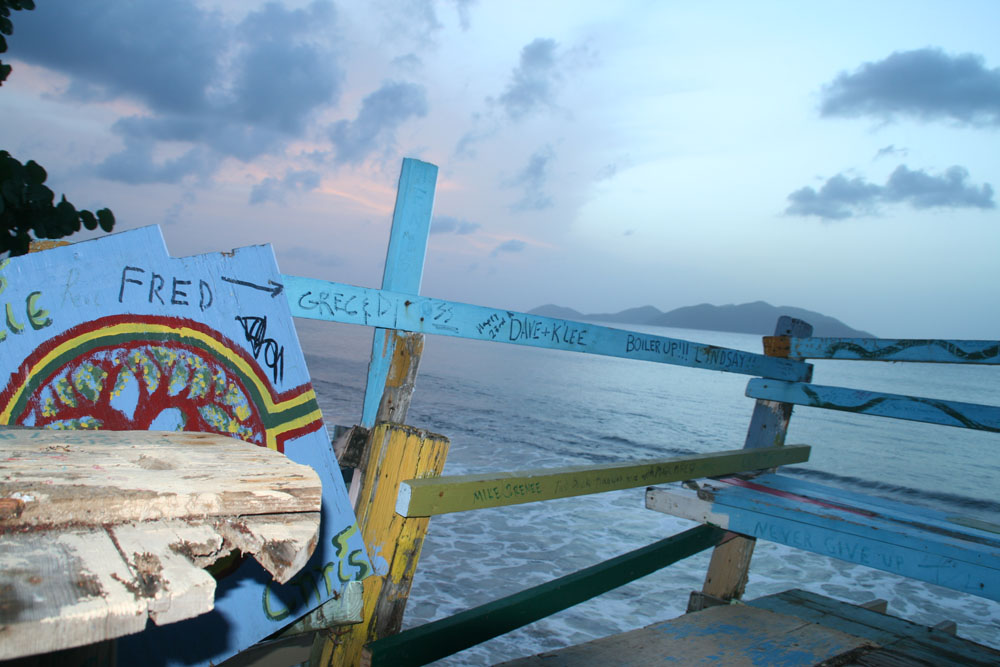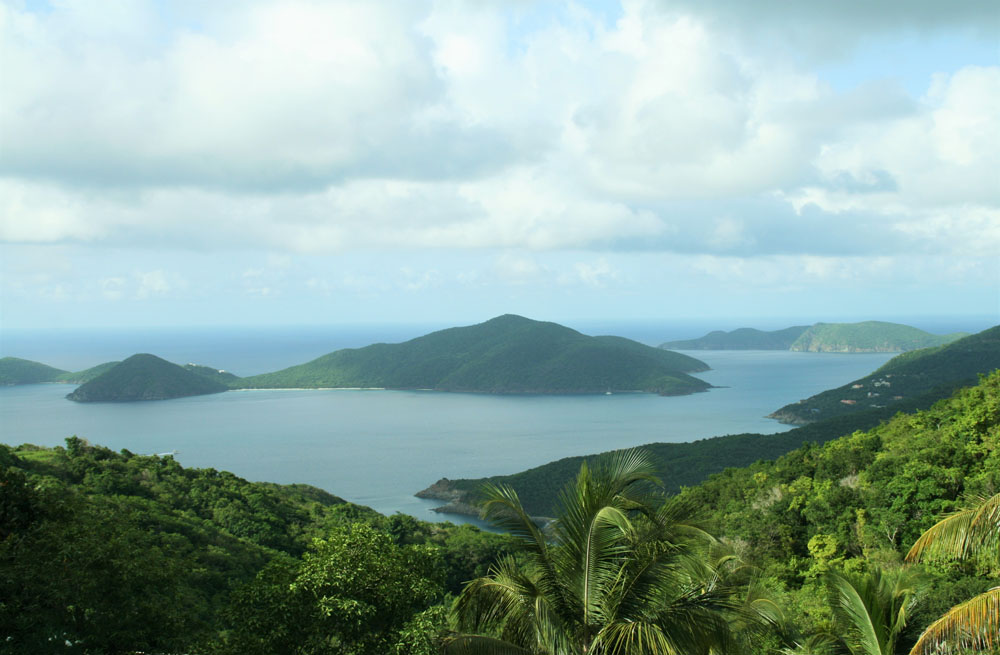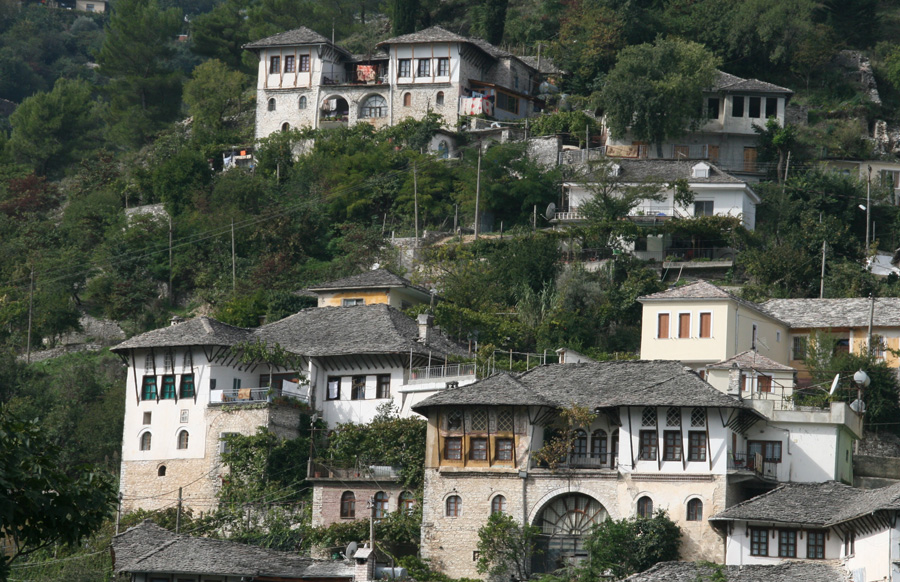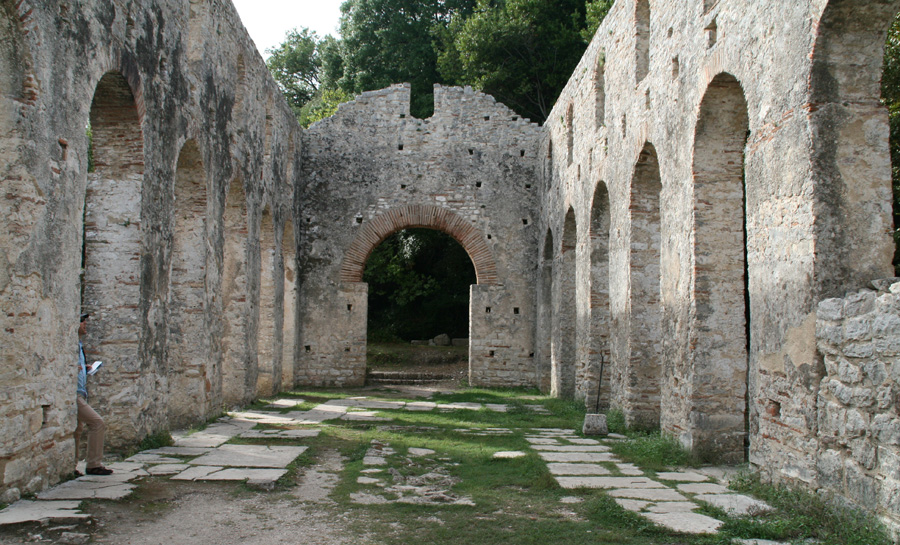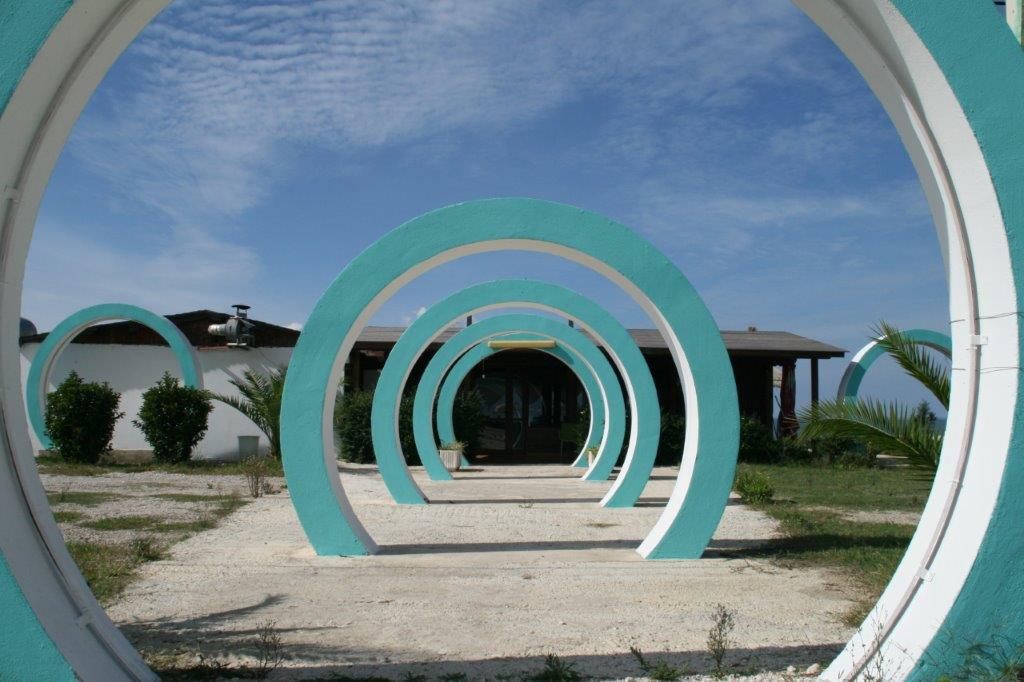THE LAPLAND HUSKY SAFARI ADVENTURE
If your name is Santa Claus, you know how it feels being at the helm of a reindeer drawn sleigh. Similarly, if your surname is Windsor, riding in a horse-drawn carriage on high days and holidays is not a novelty. Being pulled by a pack of huskies for 5 days over breath-taking frozen lakes and through snow-laden forests whilst standing on a sleigh in many layers of clothing? Certainly not an average Joe or Jane Blogs experience but one we recently had in Lapland, Finland. It was an adventure we can highly recommend.


BEING ONE WITH NATURE
They say that traveling to new and distant places open one`s mind. That is even more so when it`s not just your eyes, nose and ears that say “hey, this is new” but when all your senses are experiencing something new for the first time. Our 5-day husky safari in Lapland, Finland was such an experience – an adventure that touched all the bodily senses as well as the mind & soul.
Visually it`s quite hard to imagine: breathtakingly beautiful wide landscapes with endless snow. Think of it as variations on a white theme: trees laden with snow, hills and lakes in a thick blanket of snow, simply snow, snow, snow. One almost feels like you are in a dream-like state: some of the stretches of the journey over the frozen lakes are fairly long, up to 45 minutes at a time. The shadows that your dogs and your sleigh cast over the snow are mesmerizing, hypnotic, like being in an animated film.
At some point you sense the silence, and then the silence remains and you realise, nature is in a deep winter sleep. The only sounds are the rhythmical panting of the dogs and the friction sound of your sleigh gliding over the snow. At some point you realise you haven`t seen or heard a car, a plane or other people and animals (other than those in our group) for days. It`s like being in a magical place on our planet, a place of no boundaries, a place all to yourself.
At the outset you immediately sense the extreme temperature: your skin, your muscles and your bones are all aware of the constant, biting cold. We experienced temperatures of between -6 degrees Celsius and -26 degree Celsius during the day, even with loads of sunshine. Standing at the back of a sleigh for 4 or 5 hours and covering between 25 and 40 km per day, despite the best protective clothing money can buy, there were moments when we felt the cold. Some of the people in our group felt it most extremely in their cheeks, some in their hands and some in their feet.
Apart from the presence of snow, the most extreme sense of being close to nature is that of being very close to the dogs, the Alaskan and Siberian huskies that pulled us and our sleighs. They are the real heroes of this story and one has to stay, the most surprising part. These are not lapdogs or pets or your best friend in the sense that we`ve come to know domesticated dogs. These are working dogs. They`re not focused on attention or affection or trying to please you. They are there to run. And pull the sleigh. Sleeping outside with thin layer of straw between them and the snow is no problem – they are content with their role and place. They all have their own personalities. We learned their names and fairly quickly and got to know which of our “pack” liked his or her food, which is the shy one, which one enjoys a bit of affection. These huskies, just want to get going, especially in the mornings when harnessed and lined up in front of our sleighs, fastened to the ropes and cables – it became a relentless cacophony of barking and howling with an intensity that is quite unnerving at times. These dogs love running across the open frozen lakes and up the hills, happy in their constellation of 4 or 5, the leaders in front, the rest of the pack following obediently, a combination of trotters and sprinters. When passing through deeper tracks in the hills they are head high with the snow and often take a quick bite – a mouthful of snow to quench their thirst.
Let`s not forget our sense of smell: every now and then the crisp pure air is invaded by the smell of dog shit, these dogs poop on the trot!
The thrill of the unknown feeds us as people in many ways and the 5 days husky safari in Lapland awoke our senses and constantly reminded us that we were experiencing something new for the first time: exciting, unusual, somewhat uncomfortable, even hard at times yet pleasurable, all in one.

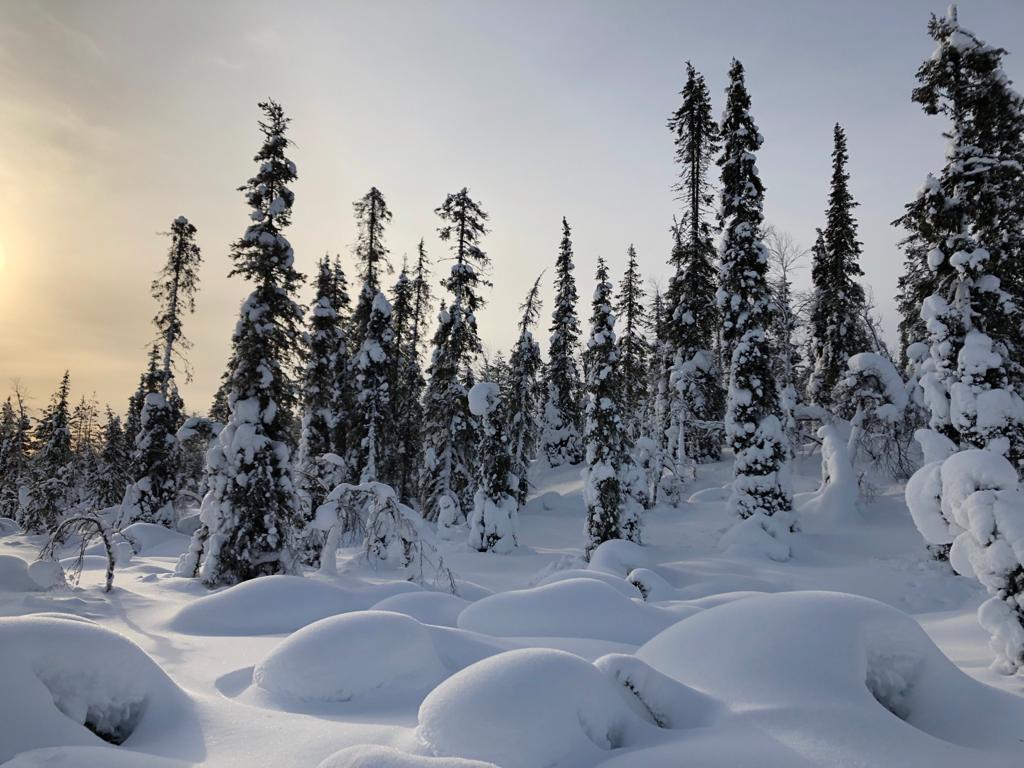




Andrè with the very affectionate Anneli.
THE HUSKY SAFARI IN SOME MORE DETAIL
We flew to Kittilä, Lapland, from Helsinki, after spending a lovely weekend in the capital. We were met at the airport and transported an hour further north to a resort called Harriniva, 2 km outside the town of Muonio, a small town in north-west of Finland and approximately 1000km north of Helsinki. It borders on Sweden so needless to say, we had to walk across the border bridge and sing Mama Mia in honour of the most famous Swedes of all time!
Situated in the Arctic Circle, snow is more or less guaranteed if you visit between December and April. Apart from husky safaris, Harriniva is also the starting point for a number of other snow-related activities and tours: snowmobiles, reindeer sleigh tours and cross-country skiing, broadwheel bicycle tours, etc.
Our decision go at the end of February was a good one. The days at the end of February are longer than say, December for example, meaning more light and possibilities of sunshine of which we had ample!
On the morning of the start of the safari, we were introduced to our guide, Piita. A young woman in her early thirties, Piita is originally from the west coast of Finland. She gave us the basic information we needed and we watched a video explaining some of the important hand signals and the `do`s and don`ts` of being a husky sleigh driver. We were a group of 7 adults from 4 different countries, 8 including Piita.
Soon we were off to get our kit. Beforehand we got instructions from the travel company on what to bring along from home so were well prepared (see section on “clothing maketh the man”). The kit we were issued consisted of a warm sleeping bag and inner, a pillowcase, very robust & warm boots, an outer layer consisting of a jacket and pair of pants plus two layers of gloves and a warm furry hat.
Kitted up and feeling like the Michelin Man with far too many layers, or so we thought, we were off to meet the dogs.
We each got our own sleigh and a pack of either 4 or 5 dogs, depending on our weight. Piita had 10 dogs as she had a larger sleigh, carrying all the food and other provisions for the entire trip. She instructed us on how to put on the dogs` harnesses and hook them onto the line with carabiners. Doing this for the first time and with gloves on took longer than expected by which stage, the dogs were all barking and howling while tugging at the cables. It was a clear message: they just want to go!
Finally, we were all ready and with the appropriate hand signal from Piita, with a jolt, a rather unexpected surge of power, we were off.
In a flash, we were in a different world. We started familiarising ourselves with the setup. Kitted out with very large moon-like boots, we were standing precariously on 2 narrow strips of wood, holding onto the handlebar for dear life, being pulled through a breathtakingly beautiful landscape by our own pack of huskies.


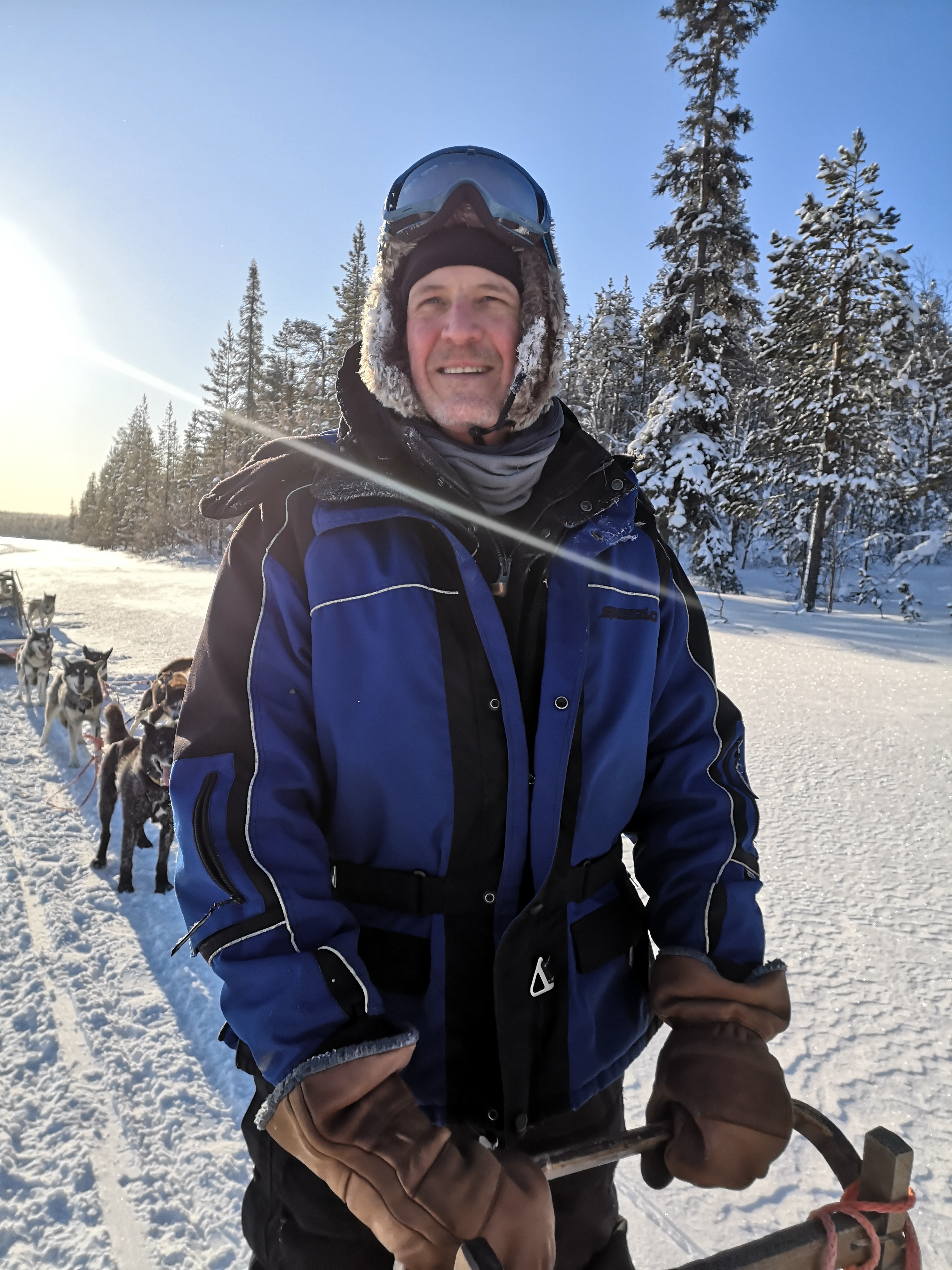

The standing position which became all too familiar.
Gerrie with Lego, his favourite. 
Taking a short break. 

THE DAILY ROUTINE
Each day had more or less the same routine and as it was a safari with opportunities for adventure and action, one is encouraged to participate in the tasks at hand. Piita did a lot of the work but there was enough to be done for everyone to get involved. She shared a story about a group she once had which included a prince from one of the Emirates, his 2 bodyguards and a couple from the UK. Needless to say, the latter were the only ones helping her with the chores!
Some of the detail of our routine:
- We slept in basic wooden huts, sleeping in a different hut every night. The huts had bunk beds and were cosy and typical for the area, often used for walking tours in the summer and hunting in the autumn. The huts had no running water (therefore no bathrooms or flush toilets) and no electricity.
- At 07:30 every morning, 2-3 people joined Piita helping her giving the dogs their breakfast.
- At 08:00 it was time for us to enjoy breakfast prepared by Piita and a really hearty one it was!
- After breakfast we packed up our stuff and did some basic cleaning of the huts and the sauna (more to come on the very-important sauna).
- Then we packed our sleighs and picked up the dog pooh. Luckily it was mostly frozen.
- Next, we prepared our pack of dogs for the day ahead: harnesses on and hooking them onto the line with carabiners. Sensing the imminent departure there’s plenty of howling and tugging. Snow anchors up and we were off.
- The routes Piita chose were varied: from crossing frozen lakes (very relaxed and easy), to hilly terrain (sometimes a bit more strenuous, especially the inclines where one has to help the dogs at times by using one leg to push) and some thrilling downhills. Your job as sleigh “driver” is primarily to hold on, but also to help steer the sleigh, especially through the curves. Key is applying the simple mechanical brake which is a pedal that gets pushed down into the snow, especially when going downhill.
- Piita made short breaks ensuring sure the group kept together and of course, for a welcome photo opportunity. Taking photos and videos on the move proved challenging but by day 3 we became more adept at doing so and captured some photos and short videos whilst holding on and steering at the same time.
- Another important break was lunch, again prepared by Piita, mostly by making a fire on top of the snow (who would have thought!) rustling up a basic but delicious meal in a heavy cast iron pan. Tea, coffee and berry juice were also on offer.
- We covered between 25 to 40 km per day, totalling 180km over the 5 days and mostly got to our destination, the overnight hut, around 4 pm.
- Then the real work started: After taking the dogs off the lines, removing their harnesses and hooking them onto a long chain, we broke into smaller groups. The first task was making the fires: one to get the sauna going and one in the overnight hut for heating water, cooking and to make the hut nice and cosy for the group.
- The water had to be drawn from a well or a hole in the snow; in some cases a hole first had to be made in the ice. The water was crystal clear and clean and made us realise how unspoilt and untouched the Arctic Circle is and how beautiful this area must be in summer with countless lakes and marshlands surrounded by beautiful forests.
- The next priority was preparing dinner for the dogs, their main meal of the day. It was a mixture of dry pellets soaked in hot water and raw pork mince which was packaged in large frozen blocks and had to be chopped into smaller chunks with axes. Needless to say, references to the movie Fargo and a particularly unforgettably gruesome “meaty” scene came to mind for several in the group!
- After feeding this pelletty-watery-meaty soup to the dogs, each dog got a bit of straw to make sleeping in the snow a little warmer. They settled down for the night very quickly after eating.
- With the dogs cared for, it was time for some snacks and reflection on the day. The sauna sessions started at the same time: each person or couple had about an hour to enjoy this ritual. The Finns invented the sauna and it is well entrenched in their culture, so this is something they are proud of and enjoy throughout the winter. Lucky for us it easy to learn: take all your clothes off, enter the sauna and sit on a wooden bench (there were sheets of paper towel to sit on for hygienic reasons), raise the sauna temperature by throwing cold water on the hot coals, wait and sweat, wait and sweat. In fact, wait until you feel your blood boiling (okay, this is the wrong place for this metaphor) then run out into the snow (yes, still naked), cool down while steam rises off your body like a loaf of freshly baked bread, run back into the sauna and start again from the top. When you`ve had enough, you end the sauna session by dousing yourself with warm water, in essence a shower. We became big fans of the sauna: you get warm, clean, relaxed and refreshed all in one session.
- Long drop toilets. Not the highlight of the trip but you will never view your loo at home with indifference again! The extreme cold makes it bearable on the one hand (it`s far less smelly compared to a long drop in the height of summer…) but also more difficult on the other hand as you have to leave the warm cosy hut and go outside. Needless to say, drinking lots of juice, water and tea at night more or less stopped on day 2.
- Dinner was prepared by Piita. Did we mention that she is not only nice and a good cook but works non-stop and also seems thrilled with her job? We couldn’t have had a better guide: she loves the huskies and being outdoors and looking after guests. And she has a wonderfully dry sense of humour!
- After dinner we ventured outside again, this time in the hope of seeing the northern lights. Despite very clear nights we didn’t get to see much other than white kind. But the stars were spectacular.
- Then it was off to bed and, apart from the first night which took some getting accustomed to the somewhat confined sleeping arrangements, we were in slumber land in a wink.

Dinner time for the dogs: Chopping frozen blocks of pork mince into smaller chunks.
Drawing water from a hole in the snow.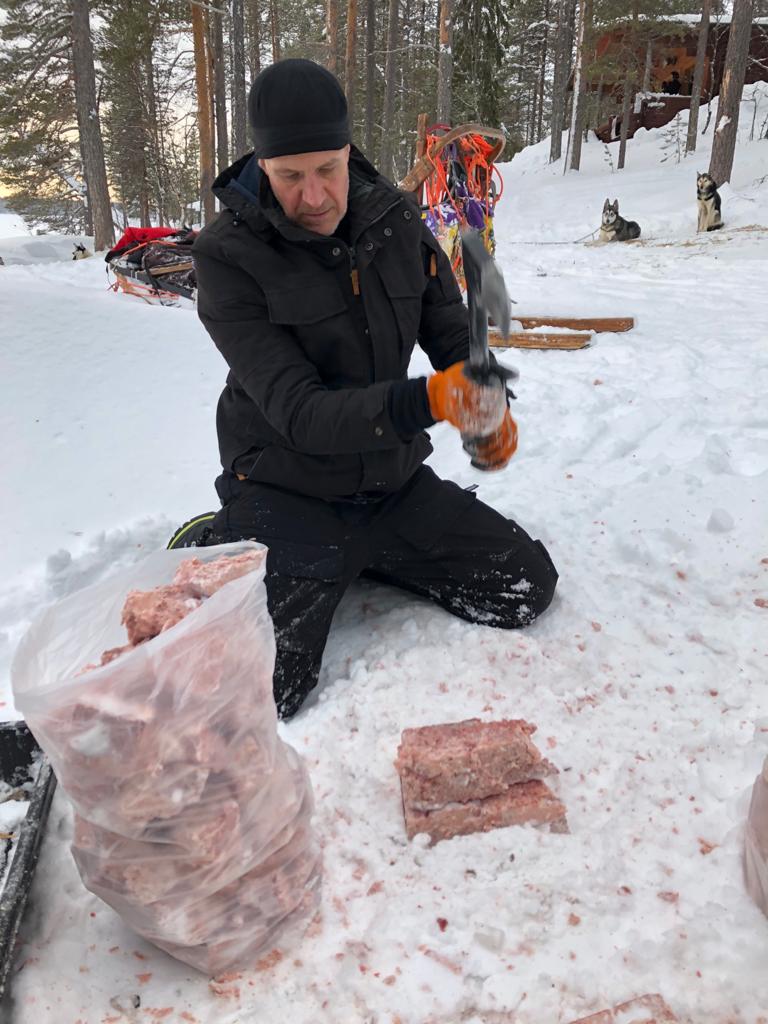

Dinner for the dogs after a hard day’s work.

View from our cabin across the lake (Photo Eva Creten) 
Dinner time! (Photo Eva Creten) 
Long drop toilet. You will never view your loo at home with indifference again!
André’s 2 favourites! 
Piita preparing lunch. 
A first: Grilling Reindeer sausage in the snow! 
The sauna: An integral part of Finnish culture. 
Lunch break, this time in a hut. 

GETTING THE LAYERS RIGHT – CLOTHES MAKETH THE MAN
Being in extreme conditions requires extreme clothing. Imagine a frozen landscape where there is snow & ice simply everywhere with temperatures during the day between -6 degrees Celsius and -26 degrees Celsius. You need to be prepared!
The instructions of the travel operator we booked with, were very clear: bring at least 3 layers of clothing for the lower body and 4 layers for the upper body. The final layer consisted of the large boots, thick jacket and thick pair of pants supplied by the husky safari company.
Having grown up in South Africa in a warm climate for the best part of the year, we were not familiar with the appropriate clothing for arctic conditions, so we decided to get some advice. Luckily we know the owners and managers of Comazo, a 135-year old family-owned and run textile company based in Baden-Württemberg, Germany. Comazo produces and sells a wide range of underwear, including functional underwear and being loyal Comazo customers (all our underwear is from Comazo) we decided to ask the company for advice on what functional underwear to buy.
We spoke with the key account manager for Comazo Protect who explained three key core principles when it comes to staying warm in cold conditions:
- Functional clothing is always to be considered as a holistic system. Each individual item of clothing fulfils a special task. If an item or layer is missing or the wrong material is used, it cannot fully meet the performance.
- The fundamental principle is that of an onion which refers to the layering of clothing, providing protection from wind, snow and rain. The layers enable air circulation between the body and the individual layers themselves, which allows sweat to be optimally transported to the outside (last layer). What you wear on the body, should ideally dry and warm in cold weather conditions, cool you down when in movement and activities and protect you from wind, rain or snow.
- The fabric itself is key and the layers, especially the first 2 or 3, should either be merino wool or synthetic. He explained that a cotton T-shirt, for example, does not transport moisture away, but stores it. This makes the shirt wet and heavy, and it dries slowly. We chose merino wool as it is natural and does an excellent job of transporting sweat to the outer layer, keeping the body dry and controlling the temperature in an optimal way. An advantage of wool above synthetic layers is that it doesn`t smell. Ideal if you have a number of days of adventure ahead and very limited space to take changes of underwear!
Needless to say we were extremely happy with our layers of Comazo clothing and stayed warm and dry (and smelling fairly fresh) for the entire 5 days. Some of the other people on our tour had quite a bit to say about the performance of their clothing but we couldn`t have been more satisfied.

Us showing off the first 3 layers of our merino wool functional clothing 





KEEN ON A LAPLAND HUSKY SAFARI ADVENTURE?
TIPS FOR AN UNFORGETABLE EXPERIENCE
- Husky safari adventures are offered in many parts of Lapland by tour operators covering Sweden, Norway & Finland. Their offers differ in the number of days, the levels of comfort (huts versus tents, for example) and the size of the group but just know before you reach for your laptop and search engine: these kind of holidays are not cheap.
- As always, planning an unusual holiday takes some effort in terms of research and making choices. We chose Fintouring https://www.fintouring.de/ as they offered what we wanted: simple yet comfortable huts (definitely not tents!) small groups of not more than 7 guests, multiple timing options (e.g. February rather than December) and the team was easy to communicate to.
- Getting to Kittilä and then Harriniva was easy enough: Kittilä is a fairly busy airport and we got there from Helsinki. The airport also has flights from Brussels and Manchester, for example.
- We highly recommend including a weekend in Helsinki at the beginning. There is plenty to see but it is relatively compact so you can cover a lot of ground in 2 full days.
- Harriniva was a great resort to start and end our trip at: https://harriniva.fi/. As mentioned, apart from husky safaris, Harriniva is also the starting point for a number of other snow-related activities and tours: snowmobiles, reindeer sleigh tours and cross-country skiing, broadwheel bicycle tours, etc.
- Although one is surrounded by snow, being cold was not a problem. Having the right clothing was key, as we discovered and leant about the value of the onion principle. Our advice: speak to experts and invest in merino wool layers. An added luxury you might want to consider are hand warmers: they look a bit like tea bags and are environmentally probably not the best option (once-off, throw away) but those in the group that had them sang their praises.
- As the huts do not have electricity one has to have power packs to charge electronic devices such as mobile phones and cameras. Sounds simple enough but the challenge is the fact that the cold temperatures make all kind of batteries/power packs go flat very quickly. The solution: keep all your devices AND power packs close to your body – your body heat help to ensure that the batteries last for the duration of your trip.
- Weather: our decision go at the end of February was a good one. The days at the end of February are longer than say, December for example, meaning more light and possibilities of sunshine of which we had ample! We experienced some intermittent snow in the evenings but luckily no rain and no strong winds, both of which will make the trip much harder. According to Piita, early January is also a good time as the sunsets have an unusual pink tinge to them.
- As this is an activity-filled holiday there isn`t that much time to take photos and taking photos and videos on the move proved challenging but by day 3 we became more adept at doing so and captured some photos and short videos whilst holding on and steering at the same time.
- Remember, accommodation and facilities are comfortable but basic: the huts had bunk beds, no running water (therefore no bathrooms or flush toilets, only long drop toilets) and no electricity.
- Meals were great so no worries about being hungry or taking extra food with you. In terms of drinks, tea, coffee and berry juice were also always on offer but you might want to consider a bottle of wine or 2, especially if you are celebrating a special occasion.
- You would need some basic level of physical fitness as your job as sleigh “driver” is primarily to hold on, but also to help steer the sleigh, especially through the curves and applying the simple mechanical brake, especially when going downhill. Furthermore, there was quite a bit of work involved with the dogs: taking the dogs on and off the lines, putting on or removing their harnesses, preparing dinner for them and picking up their pooh. Arrivals at the huts in the afternoons also meant quite a bit of work: transporting firewood on sleighs, making fires, drawing water from a well or a hole in the snow, etc. For us the work didn`t pose any problems as we considered it as part of the experience and gave us the chance to get to know the people in our group better.
- We highly recommend taking part in the sauna ritual: a great new experience awaits and afterwards you will be warm, clean, relaxed and refreshed. You will definitely feel a bit more Finnish!
- Seeing the northern lights wasn`t a focus for us but be aware that there are no guarantees and if that is the major focus of your trip to Lapland, you might want to choose a tour/safari that focuses on that specifically.
- All in all, a Lapland husky safari adventure is an activity filled time out we can highly recommend!




Singning Mama Mia in honour of the most famous Swedes of all time! A short walk across the river which forms the border between Finland and Sweden.


